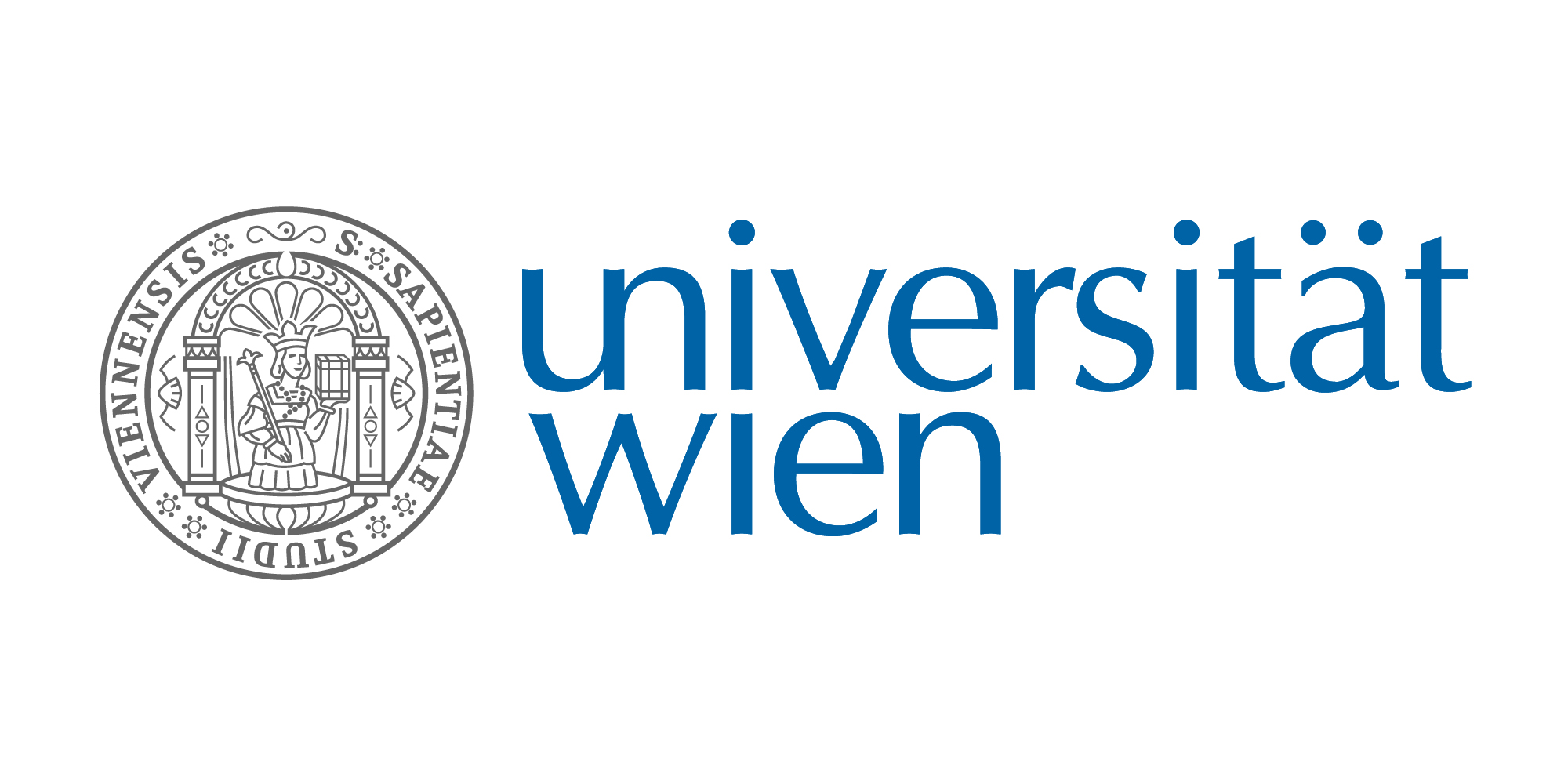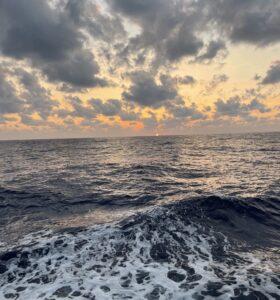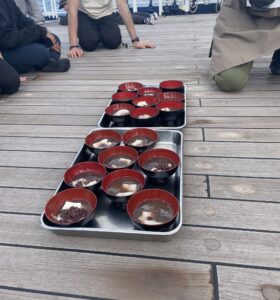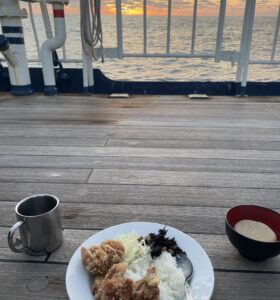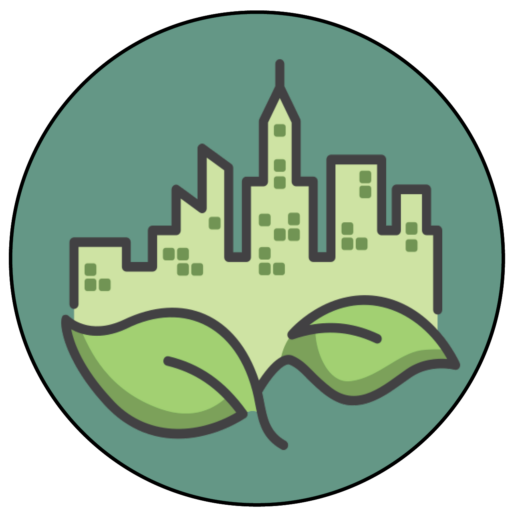One month off from Urban Studies: Sailing in the Pacific Ocean from Japan to Palau
The three most important takeaways for urban studies
How urban and a distant ocean are interconnected: Activities to sustain cities certainly affect the ocean far away, as I observed microplastics and marine debris that certainly come from human activities.
What urban governance means in Palau: Urban governance is very different in different places. However, as a person who studies European cities, I never thought about governance in Small Island Developing States (SIDS). Palau’s governance working closely with the people could be what big cities should achieve and learn from.
Challenge: Connecting cities to the ocean: Participating in a marine project as the only urban studies student made me realize the lack of academic, people’s mental, connection between cities and oceans, while the issues are often interconnected.
In March 2024, I sailed the Pacific Ocean from Yokohama, Japan to Palau. The journey was 1996 Nautical miles (=3696 km). I was selected to participate in the International Ocean Human Resource Development Project by the Ocean Policy Research Institute (OPRI). For me, having grown up in cities and now studying about cities in a city without the sea, everything was fresh and exciting. I am pretty sure I am the first person to sail from Japan to Palau in the history of 4CITIES and would like to share my valuable experience with you all. How I felt, what is urban in the sailing, urban governance of Palau, etc.
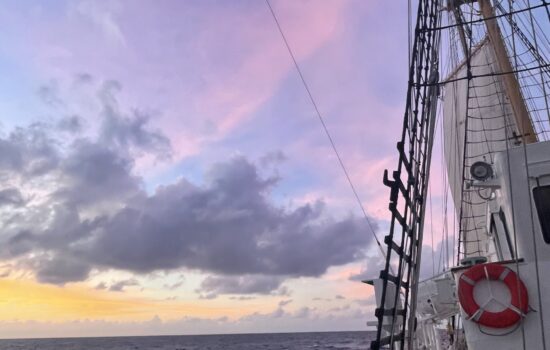
About the program
The International Ocean Human Resource Development Project was created targeting youth from all over the world to learn about ocean issues and become leaders. It was organized by the Ocean Policy Research Institute (OPRI) of the Sasakawa Peace Foundation. There were more than hundreds of applications from around the world, and 20 youths were selected. While half of them were Japanese, most of us came from abroad. I was the only one from Europe, some traveled for more than 2 days, and for some, it was the first time going abroad. We were quite diverse: with ages ranging from 12 to 24, and had interests in different areas. The diversity would be simply represented by my background: I do not study marine science, but cities, which seem to have nothing to do with the oceans. Then, we met in Yokohama, which is my hometown, and sailed to Palau on the tall ship MIRAIE as part of the Japan-Palau Friendship Yacht Race.
I came back to Japan for the first time since my 4CITIES journey began, but there was no time for being emotional. Just 14 hours later the plane landed on 9th March, I was already on the ship.
The Ship
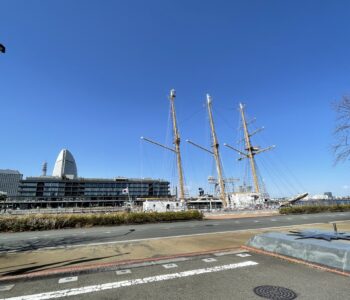
My first impression of the ship was: worry. It was much smaller than I expected, and I could not imagine how it could accommodate around 40 people inside.
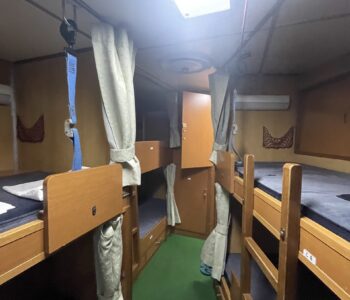
After spending 2 weeks, my opinion was: comfortable. I slept in a quite spacious bunk bed and it was much better than hostels.
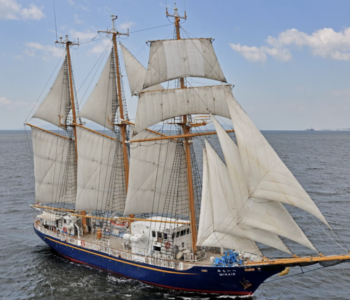
The ship has everything you need to live. It has an urban minimalist lifestyle vibe. As for the exterior, when all the sails were set, it felt like the ship came out of the movies. I didn’t even know how the sails worked, but after a few weeks, we were able to set the sails ourselves.
Activities
Until I got on board, I assumed it would be a “research” trip, as was advertised in the application. I thought I would spend a “marine scientist” sort of life, collecting data, analyzing, discussing, etc. But my expectation was betrayed in a good way. Every day was full of activities. Waking up at 6:30 with random Japanese music played, gathered on the deck at 6:45, for morning exercises and deck wash. Then, we ate breakfast freshly cooked by the chef and cleaned up dishes. By the time I usually wake up, I have done so many activities. We had cleaning duty called “happy hour”, set sail, ate lunch, then lectures about the ocean, and studying time continued. We took in sail, ate dinner, did some activities, and every day flew so fast at a speed I never felt in my everyday life in the city. We gazed at the stars at night, saw dolphins on a lucky day, did Sports Day, and had priceless sunset dinners every day. I did not have internet for weeks, but it was no problem. Every day was filled with excitement.
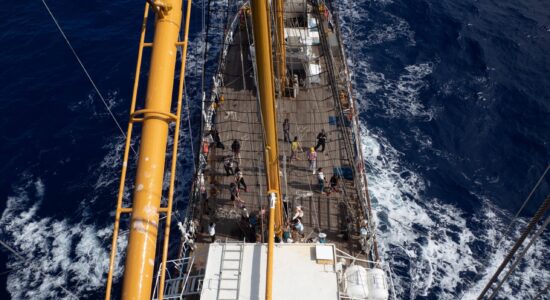
It’s been a while to be in an environment where everything is new for me. The excitement was quite different from the one I felt in city life. I may know more about cities than other people, but here I knew nothing. Everything was learning. From knotting ropes, remembering the names of sails, setting sails, to the names of clouds. Age does not matter here. My close friends were all almost 10 years younger than me, and they helped me a lot, we talked a lot. I got motivated by them. They reminded me of something important, like honesty, high motivation and curiosity, which I had forgotten in the busy city life.
Enjoying the beautiful sunsets as well as the delicious food at the ship – thanks to the chef Mr. Sanji for the later!
Photos: Shiori Hagiwara
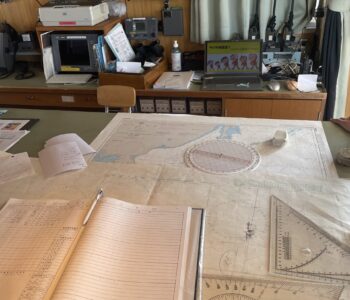
Various activities on board!
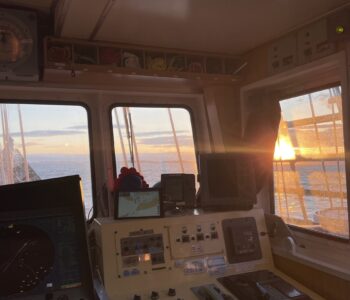
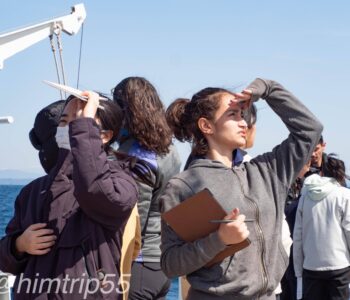
What’s urban about sailing?
As I mentioned before, everything was different from urban life. However, I discovered a connection between cities and the ocean that should never be overlooked. During the sailing, we engaged with the ocean by collecting microplastics and plankton every day and observing the ocean. It was quite shocking.
In the beautiful ocean, we observed many microplastics. We did not see lands nor other ships for weeks, and even in those places, there were microplastics. Microplastics do not exist in nature and they all originate from the daily lives of humans. The plastic observed might have come from cities I know. It was not just about this micro-world, but it was also visible. We observed some stuff that we would never have imagined floating in the ocean. A box, a sponge, and a large refrigerator. We see them in our everyday city life. But they should not be in the ocean. Activities to sustain urban life would damage the ocean. I learned it through experience.
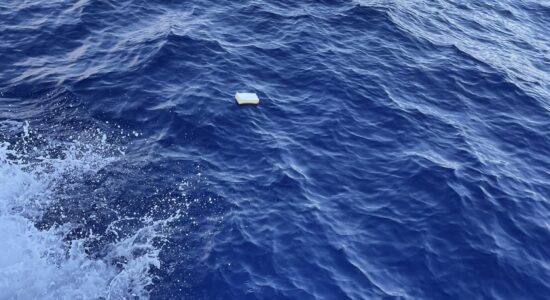
The “urban” and the ocean are too distant, yet I felt the urgent need to bridge them. Improving the awareness of the harmful effects resulting from city life. I won’t be a marine scientist to save the creatures but I can be a tiny little help if I can bring Urban Studies perspectives to the issue. The interdisciplinarity of Urban Studies should make sense in such a moment. My focus has always been on cities and never thought beyond them. But if we continue to think about cities, we should also think about the outcome beyond them. There is no simple solution and no single responsibility for the problem. But I want to keep thinking about it, and I want to be a person who bridges the gap between the city and the ocean.
After the sailing: to Palau
On 23rd March, we finally arrived at Palau. Day by day, the temperature rose, and while I was wearing a down jacket on day 1, Palau greeted us with strong sunlight and sweaty weather. Palau is a Micronesian country, consisting of over 500 islands. We arrived at Koror, the largest city in Palau. While Koror is the center of Palau, with the largest population, hotels, shopping malls, international organizations, etc, the actual capital is Ngerulmud. Ngerulmud itself consists only of government functions – the White House is located here. It is often said Ngerulmud is the least populated capital in the world. Their official languages are Palauan and English, but because of the history of occupation of Japan, and the presence of Japanese for international cooperation and business, Japanese is also present in everyday life. Some locals greeted me in Japanese, and you can get plenty of Japanese snacks in the supermarket. It felt as if I were shopping in Japan.
Palau is an interesting country in terms of government. Palau and the United States have bilateral relations. Palau was under U.S. administrative control until it gained independence in 1994. The U.S. developed and improved the infrastructure and educational system to make Palau an independent nation. Now the US military has a base in Palau.
We had the opportunity to visit the White House of Palau at the invitation of a government official and had hours of discussions. Palau’s political system is modeled after the U.S. political system and features a presidential system and separation of powers. In addition, although a small country with a population of approximately 20,000, there are 16 states within the country. Each of the 16 states has its own constitution, albeit a simple one, and each state has a state legislature.
We had a tour of the whole Whitehouse, from the President’s office to the Parliament to the Court. In other countries, I would never have had the opportunity to see the whole government institution. I could feel that Palau’s government works closely with the people. The government people took hours to show us around and discuss with us. In such a small country, my Palauan friend told me that everyone knows each other. Even the President, as he is my friend’s uncle.
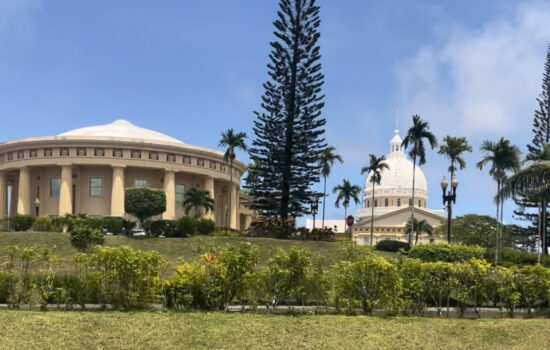
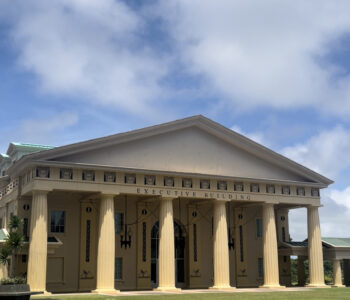
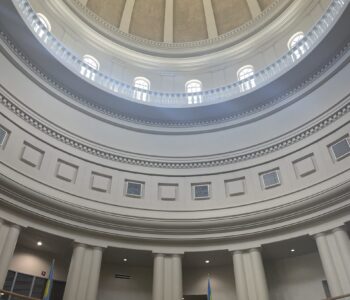
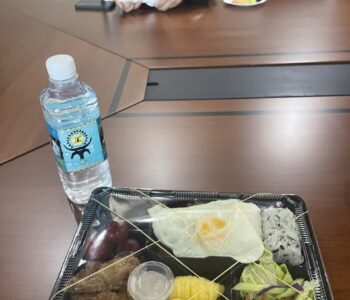
In a country with nice people, we spent a few days exploring nature, experiencing culture, and making great memories there
Final comment
Thus my one month off from Urban Studies concluded. I learned so many new things while getting more sunburn. It would not be a necessity for my Urban Studies career, but this experience would definitely enrich my perspectives, and lead to more future opportunities. It was not possible without understanding the teaching faculties of the University of Vienna. Thank you for allowing me to be away for the first few weeks! I am so thankful for all the people involved in the project, the Sasakawa Peace Foundation for giving a fully-funded opportunity, the crew of the MIRAIE ship, the people of Palau, and the youth with whom I shared this adventure! I am excited to see how our journey continues and hope to be a part of a positive impact for the future.
Shiori Hagiwara 4CITIES cohort 15
